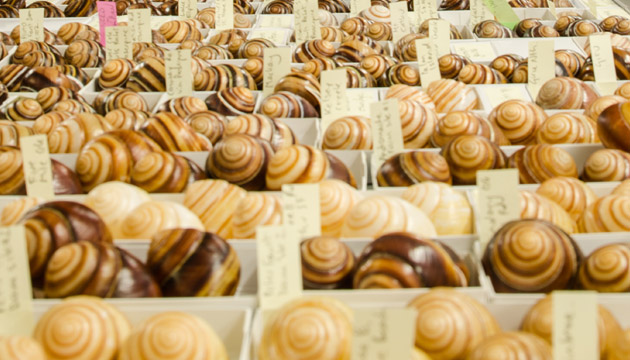Professionals and hobbyists advance the science of Australian native snails in Queensland’s Carnarvon Ranges.
Story + Photos Mandy McKeesick
In a barely explored gorge on Wallaroo station, in central Queensland, ecologist Craig Eddie is sprawled across a sandstone ledge with his arm extended into a narrow rock crevice. He pulls out a pale banded snail, and snail enthusiasts from the US and scientists eagerly inspect it.
There are more than 2500 known species of Australian native snail, and Craig is on a mission to increase that number. Craig runs BOOBOOK Ecological Consulting in Roma and has been working in the Carnarvon Ranges and south-west Queensland for more than 23 years. In his business he conducts flora and fauna surveys, provides environmental-impact statements for mining companies and biodiversity assessments for landholders, and he has always been a snail lover.
Craig grew up in Toowoomba and discovered his first new snail species there when he was 14. He has since deposited thousands of specimens with the Queensland Museum and been responsible for the discovery of another 50 species.
“Some people collect beer coasters, others like rocks, but I have always enjoyed collecting snails,” Craig says. His private collection of native and international shells is a wonder of spirals and whorls, of microscopic specimens and giants spanning nearly 10 centimetres. “It’s probably one of the most scientifically valuable collections in the country outside of museums,” he says.
The Carnarvon Ranges in central Queensland, and the 28,000 hectares of Wallaroo station, owned by Justin and Pauline MacDonnell, are some of Craig’s favourite snail haunts. “There are more gorges here than I can explore in my lifetime and that is a good thing,” he says. “It means every new gorge is a lucky dip and there’s no telling what you’ll find, what new species is waiting to be discovered.”
This story excerpt is from Issue #119
Outback Magazine: June/July 2018










